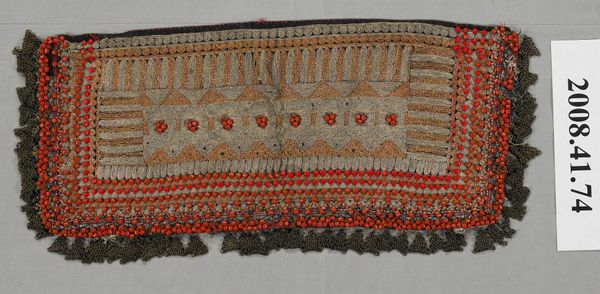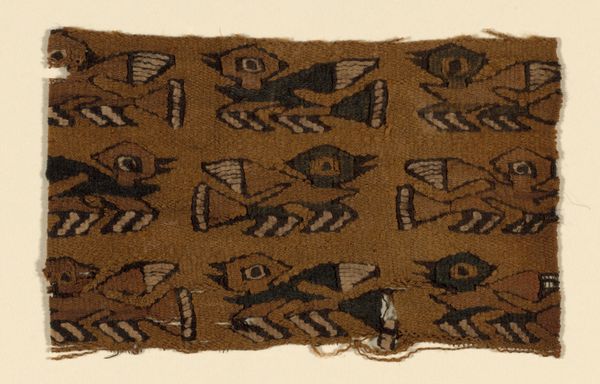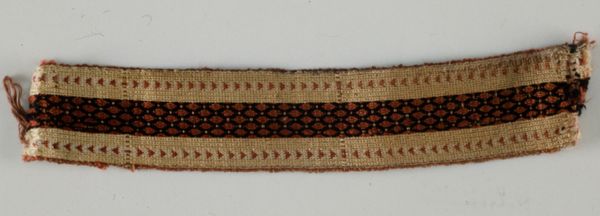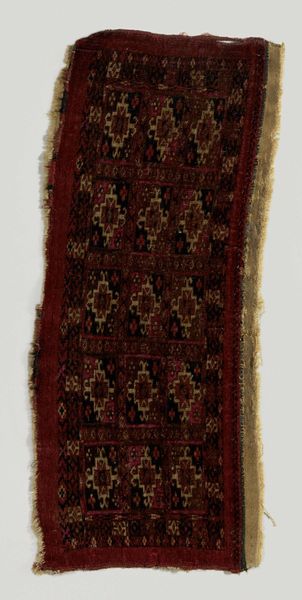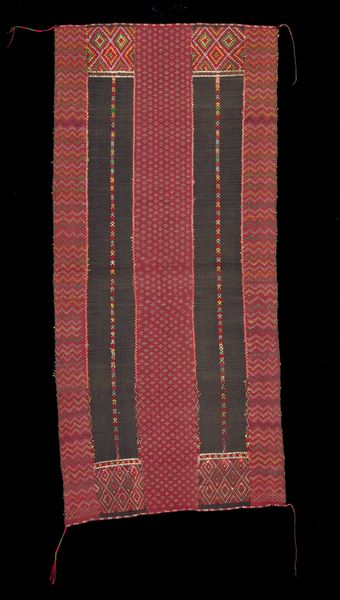
fibre-art, weaving, textile
#
fibre-art
#
weaving
#
textile
#
geometric
#
indigenous-americas
Dimensions: a: 64.8 × 3.2 cm (25 1/2 × 1 1/4 in.) b: 62.2 × 3.8 cm (24 1/2 × 1 1/2 in.)
Copyright: Public Domain
Editor: Here we have a piece titled "Headband or Belt Fragments," crafted sometime between 1476 and 1532 by the Inca people. It's made of woven fibers. The first thing I notice is the repeating geometric pattern and the warmth of the color palette. What do you see in this piece? Curator: The fundamental visual elements immediately capture my attention. Observe the precision in the execution of the weaving technique. Each color block functions as a discrete unit, yet interlocks seamlessly to establish the larger geometric configuration. It demonstrates the interplay between order and repetition. Editor: That's a great point about the individual units creating a larger pattern. Do you think the colors used, those earth tones, carry any significance in relation to the shapes themselves? Curator: Indubitably. The triad of ochre, red, and brown functions beyond mere aesthetics. Each tonal choice demarcates the positive and negative space. The strategic alternating rhythm between these hues establishes an equilibrium. What results is not merely a decorative function, but a carefully considered construction based on semiotic interplay. Editor: It sounds like every choice, every color and shape, contributes to a larger, unified visual experience. I had not thought of it so analytically. Curator: Precision within repetition constructs form, and thoughtful chromatic interaction then breathes structural vitality into the textile. This is not simply weaving. The artisans manifest command of both geometry and hue. The work offers an ideal example to study in connection to applied formalism. Editor: That gives me a completely new way of considering this headband; thank you for illuminating that! Curator: Indeed, delving into the foundational architecture reveals hidden formal nuances. It is important not only what is depicted, but how the artist has rendered it through intrinsic materiality.
Comments
No comments
Be the first to comment and join the conversation on the ultimate creative platform.

